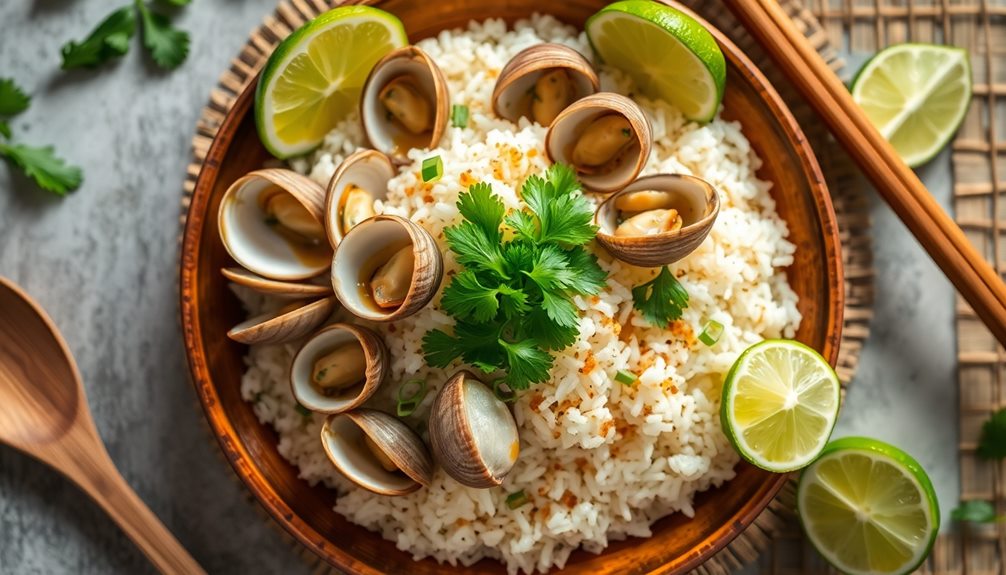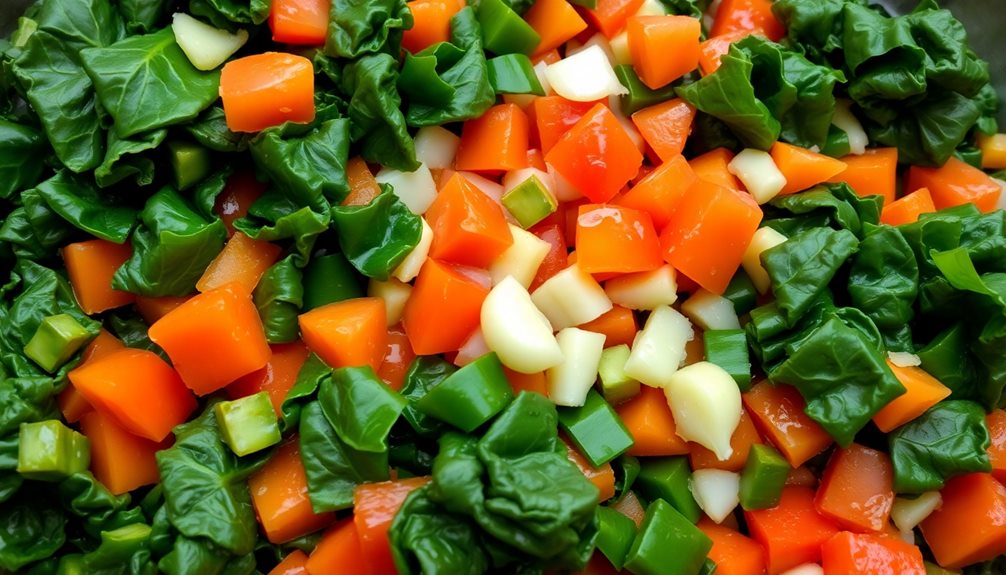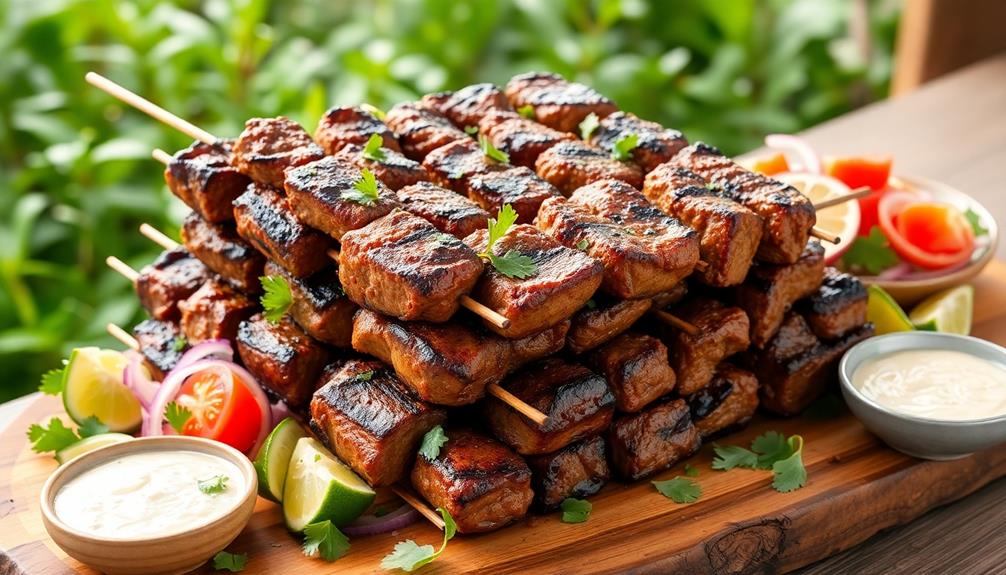You'll be delighted to try cassava leaf and rice, a nourishing African dish blending the earthy flavors of cassava with the comforting texture of rice. This staple meal has a rich history, as cassava originated in South America and rice developed in ancient Asian civilizations before becoming beloved across African cuisines. Packed with vitamins, minerals, and fiber, this dish offers a balanced source of carbohydrates, proteins, and healthy fats to support your overall well-being. As you savor the unique taste and aroma, you'll discover the cultural significance and culinary traditions behind this mouthwatering meal. Let's dive deeper into the delicious details!
Key Takeaways
- Cassava leaf and rice is a traditional African dish with a rich history, originating from indigenous South American and ancient Asian cuisines.
- The dish is culturally significant, reflecting traditional cooking methods and the importance of communal meals in African culture.
- Cassava leaves are nutritionally dense, providing essential vitamins, minerals, and dietary fiber, making it a superfood.
- The dish features an earthy, slightly nutty flavor profile with a textural contrast between the soft rice and leafy greens.
- Cassava leaf and rice can be served as a main dish or side, complementing grilled meats or fish, and is suitable for vegetarian and vegan diets.
History
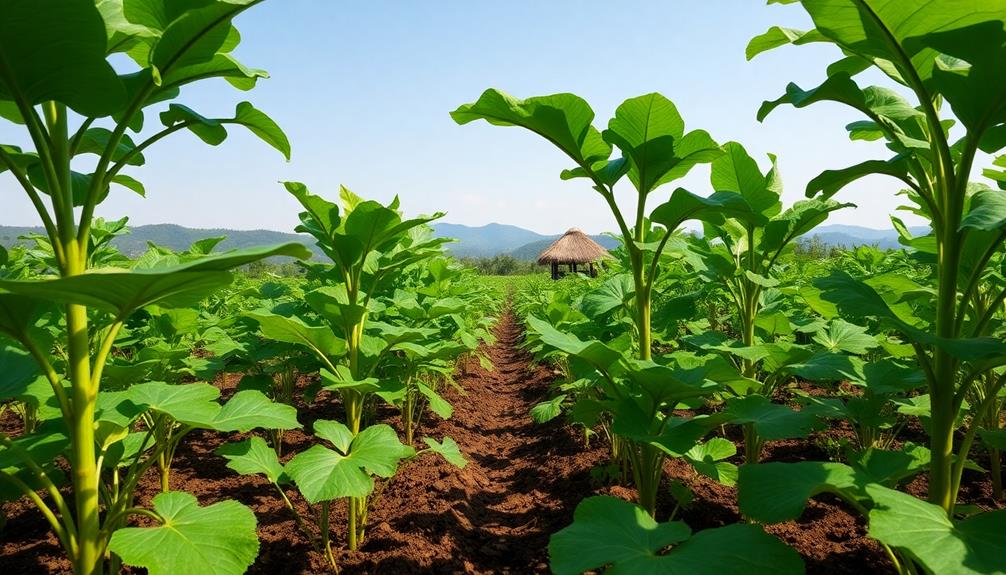
Cassava, a root vegetable, and rice, a staple grain, have long-standing histories that intertwine across various cultures worldwide.
Cassava's origins can be traced back to South America, where indigenous communities have cultivated this hardy crop for centuries. As European colonization spread, cassava made its way to Africa, becoming a dietary mainstay.
Meanwhile, rice's journey spans the Asian continent, with ancient civilizations like China and India developing sophisticated farming techniques to grow this versatile grain.
Over time, the paths of cassava and rice converged, as African cuisines incorporated both ingredients into beloved dishes.
Today, cassava leaves and rice make up the foundation of many nutritious and delicious meals enjoyed across the continent. From hearty stews to fluffy porridges, this dynamic duo offers a flavorful and nourishing culinary experience that has stood the test of time.
As you dive into the vibrant world of African cuisine, be sure to keep an eye out for the dynamic duo of cassava and rice!
Recipe
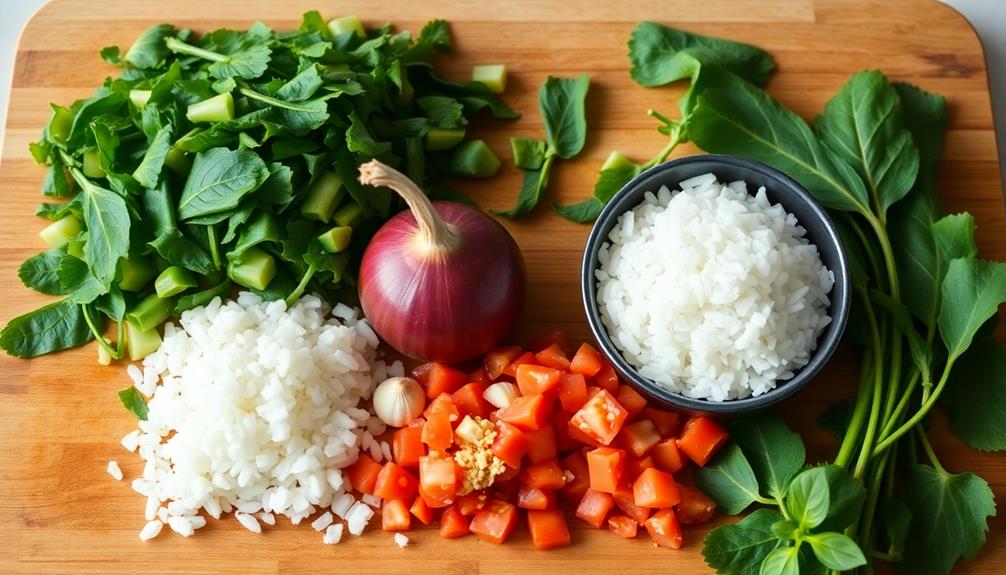
Cassava leaves and rice is a delightful and nutritious dish that originates from various regions in Africa. The tender cassava leaves are simmered in a flavorful broth, creating a savory and satisfying meal. The combination of the earthy cassava leaves and the comforting rice makes for a truly balanced and wholesome dish.
Preparing this dish is a straightforward process that allows the natural flavors of the ingredients to shine. The key is to carefully select and prepare the cassava leaves to ensure they're tender and free of any bitterness.
- Cassava leaves (or amaranth leaves)
- Long-grain white rice
- Onion, diced
- Garlic, minced
- Tomato, diced
- Vegetable or chicken broth
- Palm oil (or any other cooking oil)
- Salt and pepper to taste
In a large pot, heat the palm oil over medium heat. Add the diced onion and minced garlic, and sauté until the onion is translucent.
Next, add the diced tomato and the washed and chopped cassava leaves. Pour in the broth, season with salt and pepper, and bring the mixture to a simmer. Cover the pot and let the leaves cook for about 20-25 minutes, or until they're tender.
Finally, add the uncooked rice and continue to simmer until the rice is cooked through, about 15-20 minutes.
When serving, be mindful that the cassava leaves may require a bit more chewing compared to other leafy greens. Additionally, if you prefer a thicker consistency, you can mash some of the cooked leaves directly into the broth to create a creamier texture.
Enjoy this nutritious and flavorful dish with your loved ones.
Cooking Steps
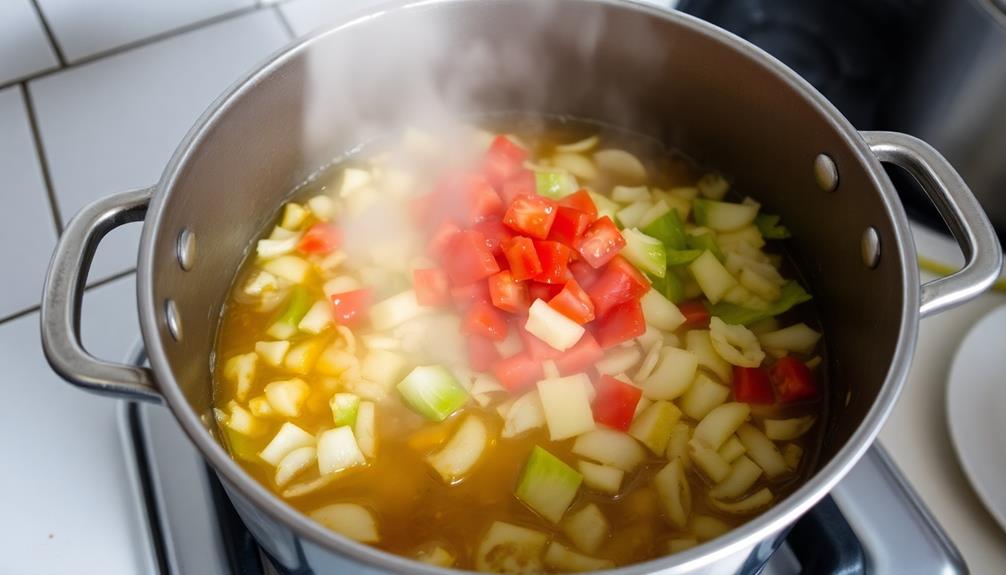
First, you'll need to soak the cassava leaves in water, then drain and chop them up.
Next, add your favorite spices to the chopped leaves.
Step 1. Soak Cassava Leaves in Water
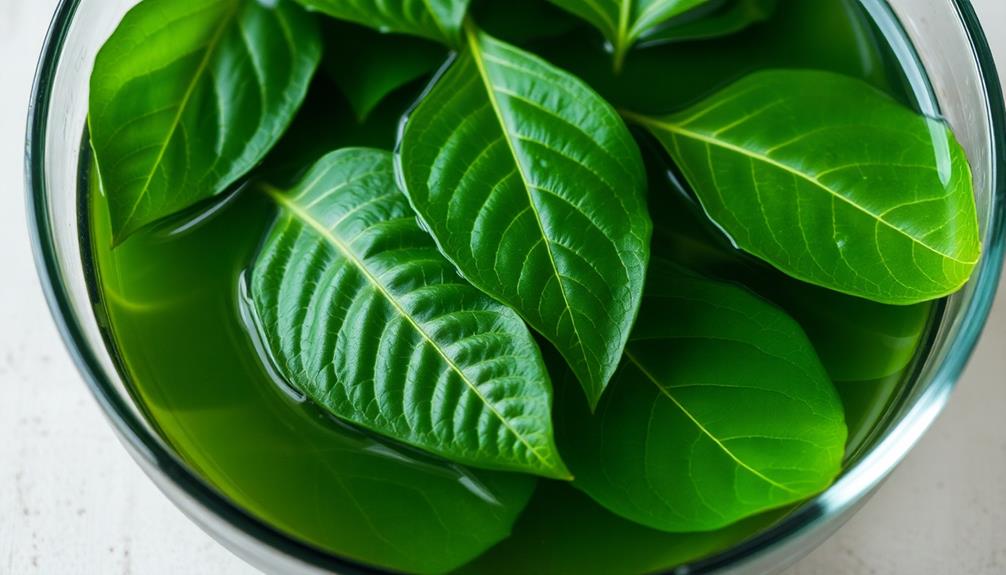
To prepare the cassava leaves for cooking, you'll first want to soak them in water. Start by rinsing the leaves under cool, running water to remove any dirt or debris.
Next, fill a large bowl or pot with clean water and submerge the leaves. Let them soak for about 30 minutes. This helps to soften the leaves and remove any bitterness.
After soaking, you'll need to drain the leaves and give them a good squeeze to remove excess water. The leaves should now be ready to chop or tear into smaller pieces, preparing them for the next steps in the cooking process.
Soaking the cassava leaves is a crucial first step that ensures they'll be tender and flavorful in the final dish. With just a little bit of prep work, you'll be on your way to enjoying a delicious, nutritious meal featuring this essential African ingredient.
Step 2. Drain and Chop Cassava Leaves

After soaking the cassava leaves, you'll want to drain them thoroughly. Grab a colander and pour the leaves into it, letting the water drip away.
Once they're nice and dry, it's time to chop them up!
Find a sharp knife and give the leaves a good dicing. Chop them into bite-sized pieces so they're easy to cook and eat. Don't worry about being too precise – a little variation in size adds nice texture.
Now you've got your chopped cassava leaves ready to go. They'll cook up quickly, so you can add them to your rice dish or other African recipes.
The leaves are packed with nutrients, so you're giving your meal a big nutrition boost. Get ready for a delicious, wholesome meal the whole family will enjoy!
Step 3. Add Spices to Cassava Leaves
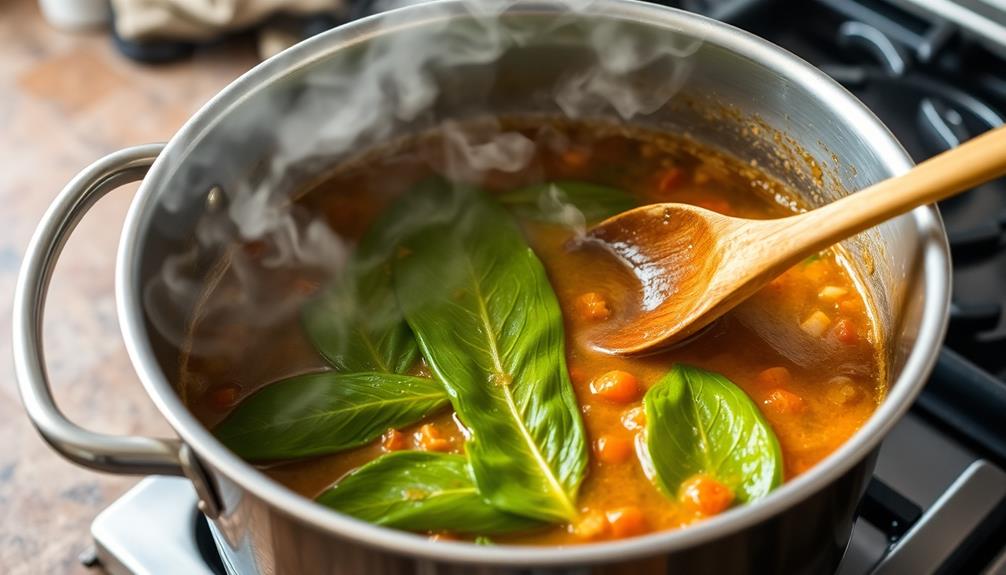
With your chopped cassava leaves ready, it's time to add some flavor! Grab your favorite spices and let's get cooking.
First, add a teaspoon of fragrant cumin. This warm, earthy spice will complement the slightly bitter taste of the leaves.
Next, sprinkle in a pinch of paprika for a touch of smoky sweetness.
Don't forget the garlic! Mince a couple of cloves and toss them in. The garlic will add depth and richness to your dish.
Finally, finish with a dash of cayenne pepper. This will give your cassava leaves a subtle kick of heat. Stir everything together until the spices are evenly distributed.
Now your cassava leaves are ready to be simmered with the rice. Get ready for a mouthwatering, nutritious meal that's sure to impress your family and friends.
Dig in and enjoy the bold flavors of this African classic!
Step 4. Add Coconut Milk to Cassava Leaves

Now that you've seasoned the cassava leaves with aromatic spices, it's time to add a creamy richness to the dish. The secret ingredient? Coconut milk! This tropical delight will transform the cassava leaves into a luscious, velvety treat.
First, pour in a can of thick, full-fat coconut milk. The creaminess will balance the slightly bitter taste of the leaves. Gently stir the coconut milk into the sautéed cassava until it's fully incorporated. As the mixture simmers, the flavors will meld together beautifully.
Next, taste the dish and adjust the seasoning as needed. You may want to add a pinch more salt or a squeeze of fresh lime juice to brighten the flavors. The coconut milk should lend a subtle sweetness that complements the earthy cassava.
Serve the coconut-infused cassava leaves over steaming hot rice for a complete and nourishing African-inspired meal. The combination of tender leaves, creamy coconut, and fluffy rice is simply irresistible. Enjoy this delightful dish with your loved ones!
Step 5. Simmer the Cassava Leaf Mixture
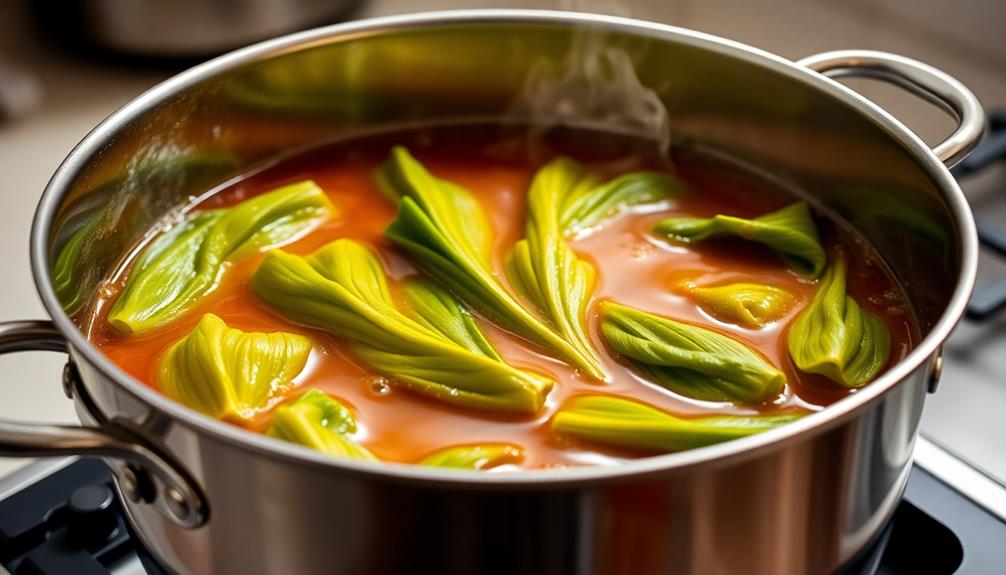
Once the coconut milk has been thoroughly incorporated, allow the cassava leaf mixture to simmer on low heat for about 15-20 minutes. This gentle simmering process helps the flavors meld together beautifully.
You'll notice the leaves softening and the mixture thickening up as it cooks. Stir it occasionally to prevent sticking or burning.
The aroma that fills the air during this step is simply mouthwatering! The blend of aromatic spices and the rich, creamy coconut milk creates a warm, comforting scent that'll have your family eagerly awaiting the meal.
Once the time is up, give the mixture a final stir. It should now have a lovely, velvety texture.
Taste and adjust the seasoning if needed – you might want to add a pinch more salt or pepper to suit your preferences. Then, it's ready to serve over a bed of fluffy white rice.
Get ready for an explosion of flavors in every bite!
Final Thoughts
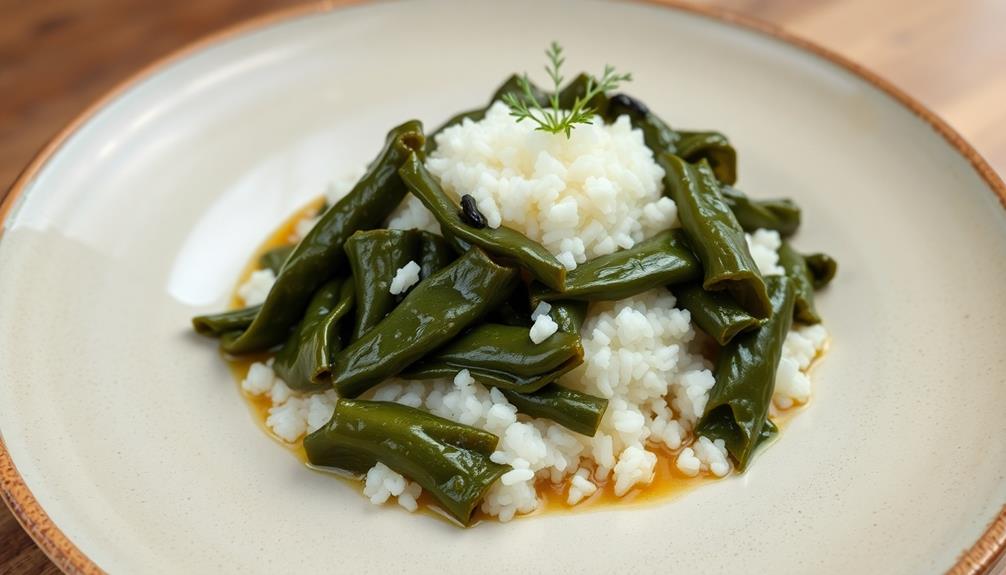
As you reach the end of your exploration of cassava leaf and rice, it's important to reflect on the key insights you've gathered. This traditional African dish not only delights the taste buds but also nourishes the body with its impressive nutritional profile.
Cassava leaves are rich in vitamins, minerals, and fiber, making them a superfood that should be celebrated. When combined with the heartiness of rice, you have a well-balanced meal that can fuel your day.
Looking back, you've learned the step-by-step process of preparing this delectable dish. From simmering the cassava leaves to seasoning the rice, each component plays a vital role in creating the final masterpiece.
As you savor the flavors, remember that this is more than just a meal – it's a celebration of African culinary heritage. So, the next time you have the chance, don't hesitate to share this unique and wholesome dish with your loved ones. The joy of discovering new cultural traditions is truly a rewarding experience.
Frequently Asked Questions
What Are the Health Benefits of Cassava Leaves?
Cassava leaves are packed with vitamins A, C, and K, as well as minerals like iron and calcium. They can help boost your immune system, improve bone health, and promote healthy vision.
How Does Cassava Leaf Differ From Other Leafy Greens?
Cassava leaves differ from other leafy greens in that they contain higher levels of protein, vitamins, and minerals. Unlike other greens, you'll also find that cassava leaves have a distinct flavor profile that sets them apart.
Can Cassava Leaf Be Consumed Raw or Does It Require Cooking?
You cannot consume cassava leaves raw as they contain cyanide compounds that can be toxic. However, proper cooking techniques like boiling or sautéing can remove these compounds, making the leaves safe to eat.
Is Cassava Leaf Safe for Individuals With Thyroid Conditions?
While cassava leaves are generally safe for most people, those with thyroid conditions should exercise caution. It's best to consult a healthcare professional before consuming cassava leaves, as they may impact thyroid function.
How Can Cassava Leaf Be Incorporated Into a Balanced Diet?
You can incorporate cassava leaves into a balanced diet by sautéing them with onions, tomatoes, and spices, then serving them alongside protein-rich foods like fish, eggs, or beans. This provides a nutrient-dense and flavorful meal.

